Horticulture Highlight: Willow, Salix sp.
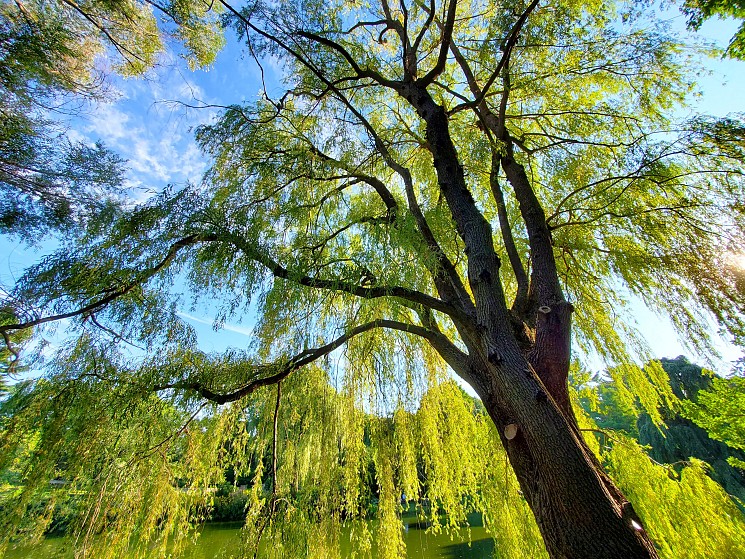
Horticulture Highlight: Willow, Salix sp.
Willow weep for me, willow weep for me
Bend your branches green along the stream that runs to sea
-Ann Ronell
Composer/songwriter Ann Ronell (1905-1993) recounted that her 1932 popular hit song (covered by scores of recording artists since then) was originally inspired while at Radcliffe, by beautiful willows on/near campus. Before and since then, innumerable people (and wildlife) have likewise been enthralled with countless willows.
Willows are trees of life. They ride
their limp boughs to their feeding ground
and sound
their roots in their immediate countryside…
-Joseph Langland
Beautiful throughout our seasons willows are within the genus Salix and botanical family Salicaceae. This large genus includes 400 species and more than 200 listed hybrids. They are native to many parts of the world including North America, Europe, Asia, Greenland, Iceland, Arctic, Central America, West Indies, North and Tropical Africa and have been naturalized in other areas beyond those mentioned. Mostly deciduous they range in form from 80-100-foot-tall erect trees, weeping trees, contorted trees, upright large arching shrubs, bushy shrubs, down to 6-inch-high dwarf, arctic/alpine species.
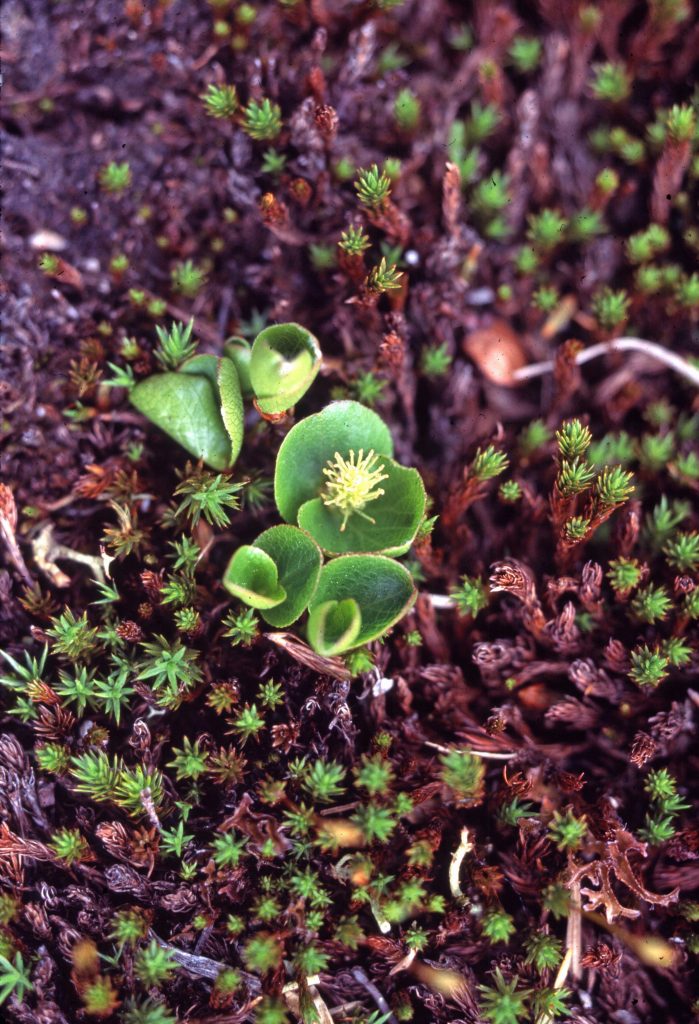
Willow ancestors to today’s arctic/alpine extant species including Salix herbacea have been found in Asian and European geological research dating back 70 to 135 million years ago. In addition to the above botanical facts, Christopher Newsholme in his definitive book Willows: The Genus Salix, states, “It is significant that perfect specimens of the honey bee (Apis mellifera) have been found embedded in amber dating back 90 million years…The pollination of willows, with few exceptions is still carried out by honey bees and, to a much lesser extent, by other insects.”
Of local phenological corroboration we check for willows in the index of Henry David Thoreau’s 14-volume Journals finding for April 17, 1852, “The scent of the earliest spring flowers! I smelt the willow catkins today…Not highly spiced and intoxicating…but attractive to bees…” Another entry from April 28, 1860, “…These willows are full of bees and resound to their hum…As you stand by such a willow in bloom and resounding with the hum of bees in a warm afternoon like this, you seem nearer to summer – than elsewhere.”
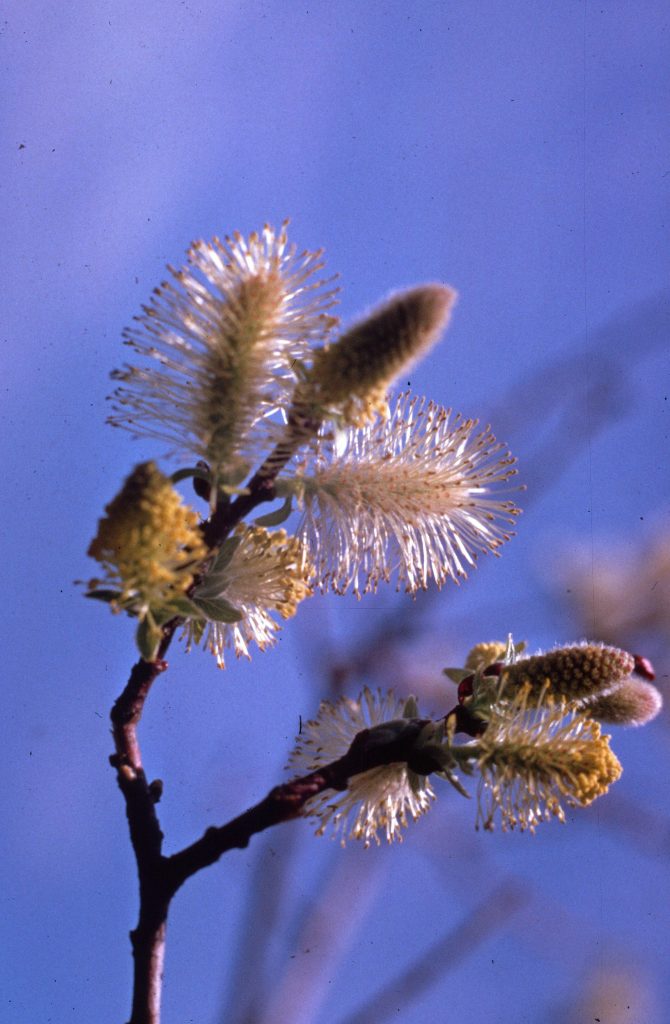
Discussing bees, brings us to willow flowers that are catkins (see catkins on birch). Formed as a short, dense apetalous (without petals) spike, these are primarily unisexual, male with stamens or female with pistils. Willow catkins in early phases of development often have distinctive silky hairs through which the reproductive stamens and pistils will eventually grow. This pre-mature silvery-gray phase is what is popularly known as ‘pussy willow’. One native willow, Salix discolor is frequently the source used as commercial/retail availability.
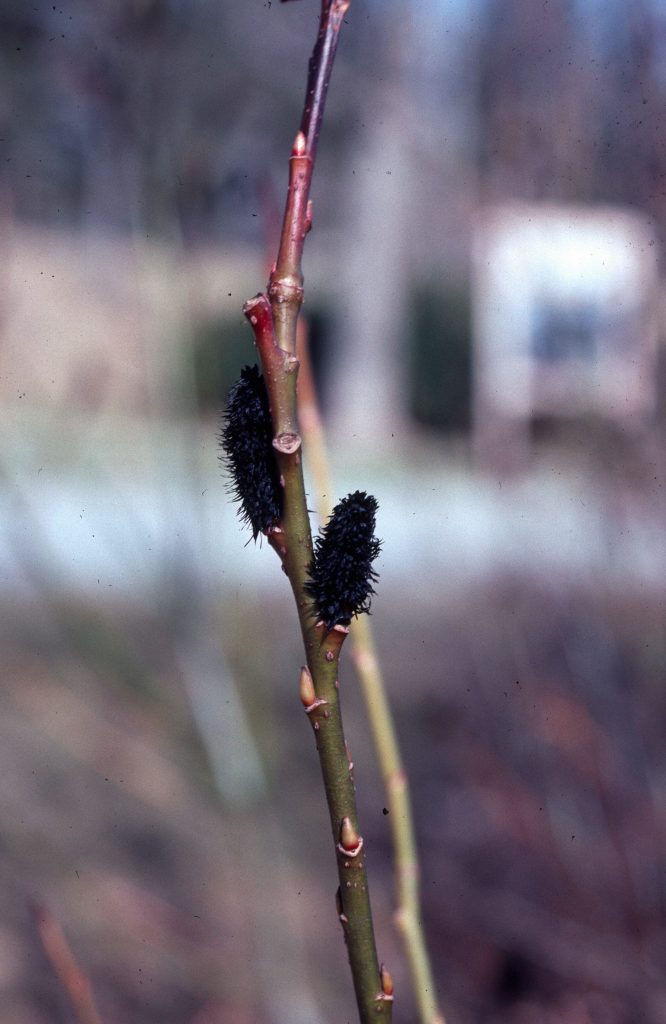
As there are visual distinctions between oaks’ acorns and pines’ cones depending on differences among their respective species, so there are tell-tale uniqueness’s amongst pussy willows. One idiosyncratic beautiful example is Salix gracilistyla var. melanostachys, the black pussy willow.
Having begun with willows as muse for music, there is inclination to also explore additional examples of willows in other arts, folklore, horticulture, science and economy. However, having been grown since ancient times across numerous cultures, we refrain from entering that fascinatingly deep, convoluted rabbit hole.
…Mixed with the cry of a bird
As a cardinal flashed through the willow
And suddenly screamed…
-May Sarton
Instead we conclude by reviewing the three types of willows currently within our living collection. Golden willow, Salix alba var. vitellina is native from central and southern Europe to western and central Asia although it has become widely naturalized throughout our country. This large tree, 70-100-feet, is frequently found along rivers, streams, ponds and moist meadows. Its 1 ½ – 4 -inch-long, lanceolate leaves have a serrulate (minutely toothed) margin. The undersides of the leaves have a silvery/white hue and the autumn color is a fine yellow. Its male catkins are showier than its female catkins. The common name alludes to the bright-yellowish color of the smooth youngest stems. However, the main trunk’s ridged and furrowed bark is more typical brown. There are two of these trees on the northern side of Willow Pond.
…A willow-tree flickers
With little white jerks,
And long blue waves
Rise steadily beyond the outer islands.
-Amy Lowell



Wisconsin weeping willow, Salix xblanda, is a hybrid between Salix babylonica and Salix fragilis. Look for this on the southern side of Willow Pond, near Almy Road, this is about half the height of the above mentioned, Salix alba var. vitellina in view across the pond.
This weeping-willow is still most quiet and beautiful;
It bends and breathes and sways
To its brown brook and dew-bright moss, wind-quivering
All its long placid days…
-Jerome Weisser




Golden weeping willow, Salix xsepulcralis is a hybrid betweenSalix alba var. alba and Salix babylonica. This hybrid has the greater height of Salix alba along with truer weeping habit of S. babylonica. Look for this on the eastern side of Halcyon Lake. All of these are fast growing.
Sometimes, when the light strikes at odd angles
and pulls you back into childhood
and you are passing a crumbling mansion
completely hidden behind old willows
or an empty convent guarded by hemlocks
and giant firs standing hip to hip,
you know again that behind that wall,
under the uncut hair of the willows
something secret is going on,
so marvelous and dangerous
that if you crawled through and saw,
you would die, or be happy forever.
-Lisel Mueller
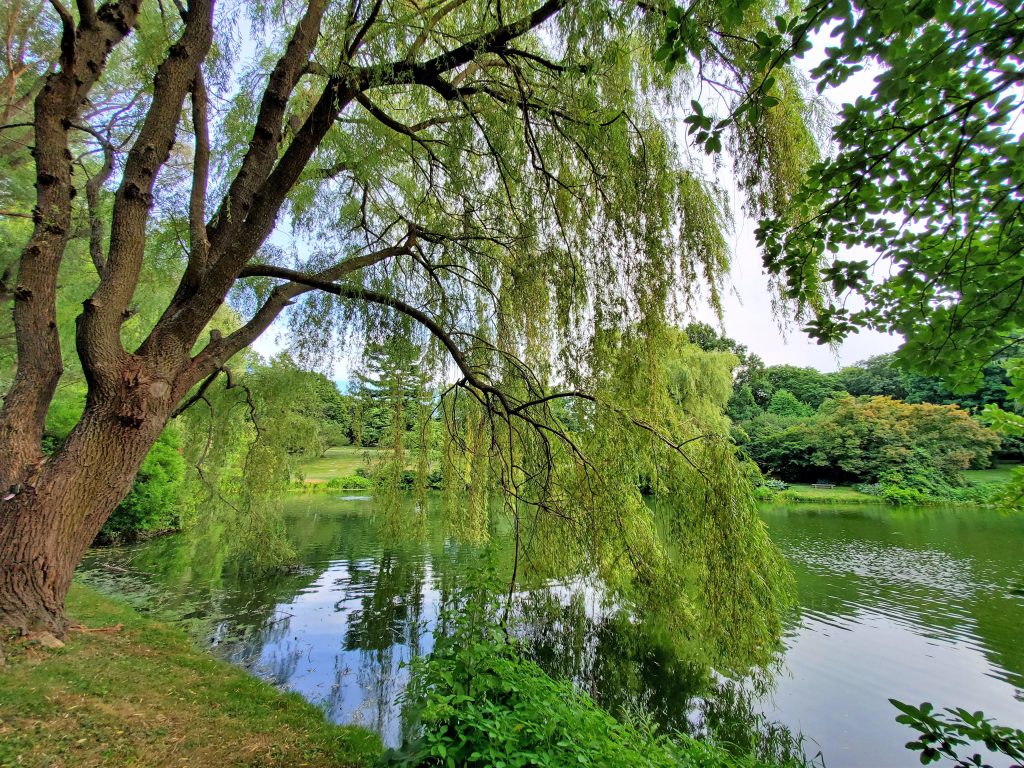



Leave a Reply